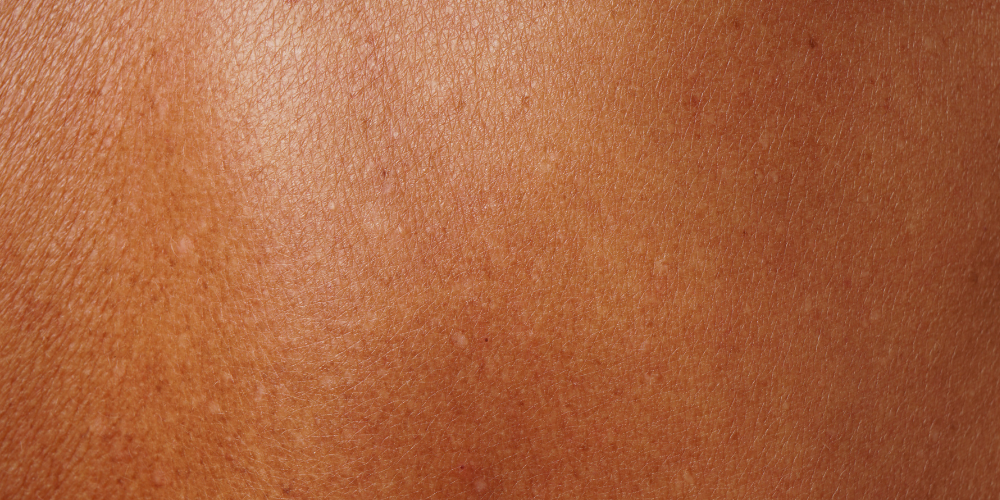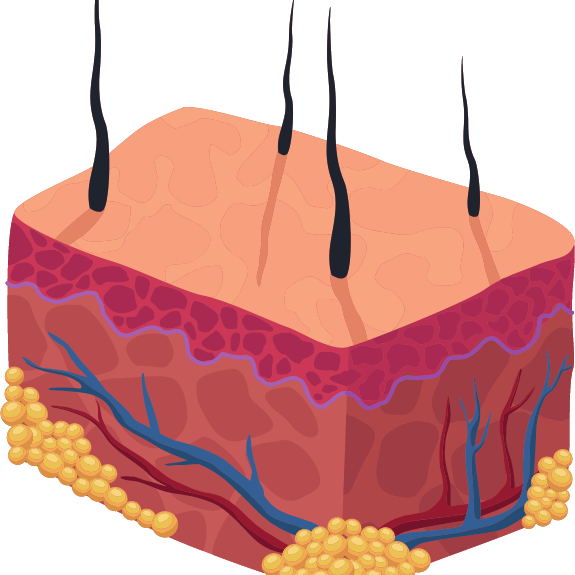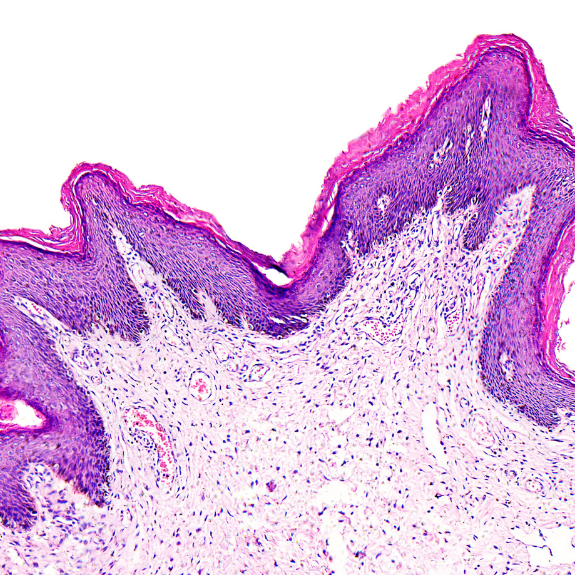Understanding the dermal aging

No Comments
The skin serves as a protective barrier between the body’s organs and environment. Skin is composed of many cell types and layers. As we get older, skin cells start to degrade in terms of less production and become shorter in size like a pencil eraser gets shorter each time it’s used which causes it to less effective protective barrier, and immune functioning.
The connective tissue is another reason for dermal aging. The connective tissue which gives skin its strength and bounce contains main components like collagen, elastin, and hyaluronic acid. As we age the production of main components of connective tissue which keeps skin youthful deteriorates, resulting in dryness, disappearing thickness, fine lines, and wrinkling.

The skin consists of three layers
Epidermis – The outer layer serves as a barrier to the outside environment. Some environmental factors, climate, pollution, and excess sun exposure all disrupt the main functions of the epidermis so it’s important to keep the outer layer cleansed, hydrated, and protected from sun rays.
Dermis – It’s the main part of the skin, a tough elastin layer housing important structures of the skin. As we age, this layer gets thin resulting in wrinkles, change in texture, color, and a lack of elasticity. Avoiding excessive sun exposure, and good skin health can help to delay the changes in the dermis.
Hypodermis – The deepest and thickest layer of the skin, contains bundles of collagen and fat cells. The skin’s appearance is affected by this layer. As we age this layer this layer gets thin and produces less collagen. A well-balanced diet, good health, and exercise help to keep the hypodermis from thinning.

Skin aging and intrinsic factors
As the skin ages, changes are visible to us. The skin is subject to both intrinsic and extrinsic aging. Intrinsic aging is hereditary and biological in nature and ruled by own body’s biological clock. There are a variety of factors that influence intrinsic aging :
Ethnicity, Anatomical variation, Hormones, Time. It’s now largely accepted that genetic factors influence approximately 3 to 15% of the aging process and the rest is all by external factors. It’s a good sign that we can potentially make some difference.
Skin Aging and external factors
External aging is caused by external factors that often act together with the biological aging process to prematurely age our skin.
Factors that influence extrinsic aging: UV Rays, Diet, Smoking, Pollution, Climate, Light
UV rays & Light – exposure to the sun induces the formulation of free radicals, which are harmful to the skin cells. In the dermis and epidermis, free radicals cause the activation of enzymes that degrade collagen, and proteins and damage support skin structure. UV rays disrupt the new collagen synthesis resulting in loss of collagen, wrinkles, sagging, thin, inelastic skin. The light from computer screens also creates free radicals that damage the skin.
Diet – There are many dietary factors that can speed up or slow down the skin aging process. Food that is lack vegetables, fruits, and processed can be considered an aging diet. Foods filled with nutrients like vitamins A, C, and E are good for healthy skin. Sugar will contribute to premature skin aging by causing an internal chemical reaction called glycation. The glucose(Sugar)that produces the energy for the cells can react with collagen and elastin which play important role in our skin structure, support, and tightness.
Smoking – Tobacco affects the body, skin, and shape. Tobacco smoke released into the environment has drying effects on the skin’s surface and it reduces the blood flow to the skin thus depleting the skin of oxygen and essential nutrients. Research has shown that smoking increased the production of enzymes in our body that break down the collagen and elastin fibers leading to the risk of premature aging, wrinkles, and sagging.
Pollution – A number of researches found the effects of pollutants (Nitrogen dioxide, ozone) on skin aging: Squalane and vitamin E both are the main antioxidants at the skin surface, and both decreases in the polluted environment as antioxidants are mobilized to combat oxidative stress in the skin. A low amount of these two antioxidants is associated with dry skin and interferes with wound healing. When exposed to pollution there is a tendency for higher sebum secretion rate, decreased cutaneous pH, and low levels of cholesterol in the skin.
Climate – Changes in the climate like humidity and extreme temperature tend to weaken the skin barrier system.
What should we do?
Aging is an organic and inescapable fact of life. Extrinsic aging is caused by external factors acting together with intrinsic aging, the process to age the skin. We have very little control over intrinsic aging but we can make the process slow of extrinsic aging with 3 preventive strategies. Prevention is the key.
Primary prevention – avoid excessive sun exposure.
Secondary prevention – eat a healthy balanced diet, avoid cigarettes and too much alcohol consumption, get enough sleep, and avoid a polluted environment.
Tertiary prevention – take care of the skin with good skin care. Prevention strategies can make a noticeable difference to the skin.
We believe stress should not be too much on reverse aging, focusing instead on taking good care of skin, and body and embracing aging by looking healthy, strong, and radiant.
